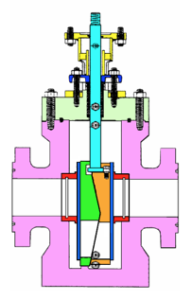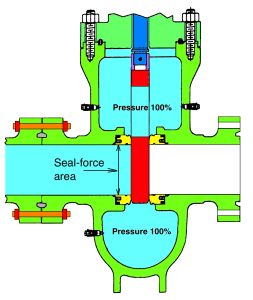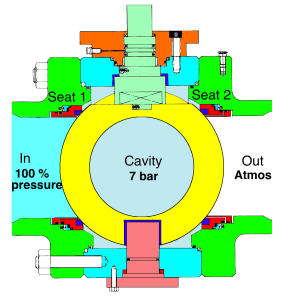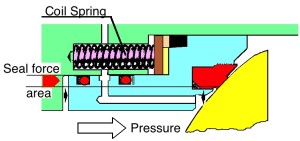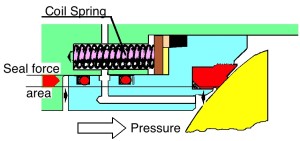Double block & bleed: understanding a barrier, part two
Let us start this part with a question:
What makes a valve seal? And the answer is: Force from either system pressure or from a mechanical closing force. If we divide the valves into two categories most ball valves and solid slab gate valves fall into the category that seals by means of system pressure, however expanding gate valves and globe valves seal by means of the closing force from the wheel / gear/ actuator. Most people don’t think of what seals the valve as long as it doesn’t leak. Some valves are accepted as double block & bleed valves and others not.
Double expanding gate valves illustrated in Figure 5 are accepted as double block & bleed valves and are used as a single valve with double isolation. But solid slab valves as the one shown in Figure 6 is normally not accepted as a double isolation valve. This has to do with psychology, if you don’t know how the valves actually work you feel safer with a mechanically sealed valve compared with a pressure sealed valve. The same goes for ball valves. It is not everybody that feels safe with only one closed ball valve as a barrier, they want two valves to get a double block and bleed. The type of valve is not always thought about, if the valve is equipped with a floating ball or a trunnion ball, or if the valve is a self-relief, double piston or a combination of both types.
One cannot compare a slab gate valve with a trunnion-mounted ball valve – they are two completely different things. As earlier illustrated on the solid slab in Figure 6 it is the system pressure on the whole gate area that forces the gate towards the down stream seat and the main seal is the down stream seat. On a trunnion-mounted self-relief ball valve the ball is locked to the upper and lower spindles and the main seal is the upstream seat that seals against the seal area on the ball. When looking at the illustration in Figure 7 it shows a trunnion-mounted ball with self-relief seats. When the valve is operated to its closed position and depressurized on the downstream side the cavity-pressure will, as illustrated, be reduced to a pressure equal to the force from the coil springs holding the seat against the ball. The active seal force in this valve will be the system-pressure forcing the upstream seat against the ball.
The actual seal-force from the seat is dependent on certain factors: A) the coil springs’ capability of holding the seat in contact with the ball’s seal-area; B) An open split on the back of the seat allowing the system pressure entering the seal force area; C) The friction between the seat and the seat-pocket must not be too high. The actual seal-force from the seat against the ball relay on a combination on those three factors. If the friction between the seat and the seat-pocket are too high the springs may not compress the seat against the ball and lack of that contact will give a leak between the seat-seal and the ball. If the split on the back of the seat is filled with hardened hydrocarbon sediments as illustrated in Figure 9 there is no seal-force acting on the seat. As one can see in Figures 8 and 9 the seal on the trunnion ball valve relies on the internal condition on the upstream seat as the ball is locked and not floating.
When comparing a closed trunnion ball valve as in Figure 7 and a solid slab valve illustrated in Figure 6, the seal- force of the solid slab valve is many times higher and much more reliable than the seal-force of the trunnion mounted ball valve. When securing a valve preparing for a job one has to know which type of valve that is to be used as a barrier. Figures 8 and 9 show a self-relief valve, but if the valve is a double piston or a combination of a self- relief and double piston the valve has to be treated differently.
To be continued…
Vil du laste ned denne artikkelen som PDF?
Klikk her for å laste ned

